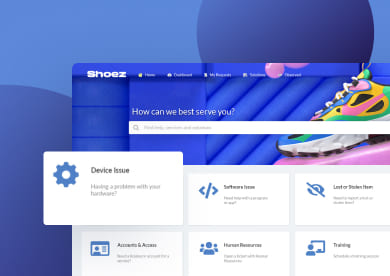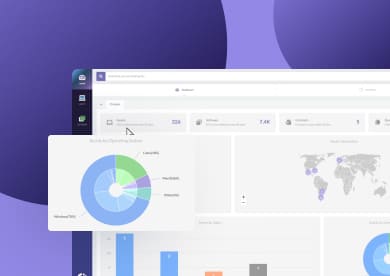SaaS governance is the framework organizations use to control, monitor, and optimize their use of Software-as-a-Service (SaaS) applications. It ensures that tools are not only compliant with internal and external regulations but also aligned with business objectives, budget, and security requirements.
Why should you care? Because without it, you risk data breaches, compliance headaches, shadow IT, and wasted money on unused subscriptions. With it, you gain visibility, reduce costs, and keep your SaaS ecosystem running smoothly.
Why is SaaS governance important?
SaaS governance is important because it helps businesses keep their software ecosystem secure, compliant, and cost-effective. It gives IT teams the visibility and control they need to avoid risks like shadow IT, data loss, or wasted spending. And that’s a huge deal considering Gartner predicts that by 2028, 75% of enterprises will treat SaaS backup as a critical requirement, up from just 15% in 2024.
The message is clear: as SaaS becomes the foundation of day-to-day operations, companies can’t afford to leave things unmanaged. Without governance, outages, cyberattacks, or vendor mishaps could expose critical data and disrupt operations. With governance, SaaS becomes a strategic enabler instead of a liability.
Challenges of uncontrolled SaaS growth
When SaaS isn’t governed, things can get messy quickly. What starts as a handful of helpful apps can turn into an uncontrollable stack full of risks. Some of the main challenges include:
- Shadow IT – Teams sign up for tools outside IT’s oversight, creating security and compliance blind spots.
- Data exposure – Unmonitored apps can leave sensitive data vulnerable to breaches or mismanagement.
- Compliance risks – Without governance, it’s harder to prove adherence to regulations like GDPR or HIPAA.
- Wasted spend – Duplicate licenses and unused subscriptions drive up costs with no added value.
- Operational inefficiency – Too many disconnected apps lead to silos, integration issues, and poor visibility.
SaaS governance benefits
SaaS governance flips the script. Instead of dealing with constant risks, organizations gain a structured approach that maximizes value. Key benefits include:
- Improved visibility – A complete view of all SaaS applications in use, including shadow IT.
- Stronger security – Centralized access control and monitoring reduce vulnerabilities.
- Regulatory compliance – Clear policies and reporting help meet industry and legal standards.
- Cost optimization – Eliminate unused licenses and prevent overspending with better tracking.
- Operational efficiency – Policies and integrations ensure SaaS supports business goals instead of complicating them.
SaaS governance framework elements
A SaaS governance framework is the set of rules, processes, and responsibilities that guide how an organization acquires, manages, and secures its SaaS applications. It provides structure to avoid the chaos of uncontrolled SaaS growth and ensures that every tool in your stack supports business goals while staying compliant, secure, and cost-effective.
There isn’t just one framework that all companies follow. Instead, each organization builds its own SaaS governance model, usually shaped by its industry regulations, risk profile, size, and existing technology stack. Still, most frameworks share a set of common elements that cover the essentials of SaaS Management.
The main elements of a SaaS governance framework include:
- Application discovery – Finding and cataloging all SaaS apps in use, including shadow IT, so nothing flies under the radar.
- Identity and Access Management (IAM) – Defining who can use which apps, applying role-based permissions, and integrating with identity providers.
- SaaS data governance – Establishing policies for how data is stored, shared, and protected across applications to reduce security risks.
- Compliance and Risk Management – Making sure SaaS vendors meet regulatory requirements and align with internal security standards.
- Lifecycle and change governance – Setting clear processes for onboarding, updating, and retiring SaaS applications.
- Cost Management – Tracking usage and licenses to eliminate waste and optimize SaaS spending.
InvGate Asset Management as your SaaS governance software

InvGate Asset Management is a comprehensive ITAM solution designed to give you full visibility and control over your technology ecosystem. It’s built for both IT and non-IT teams, with an intuitive no-code interface that makes adoption fast and painless.
You can deploy it on-premise or in the cloud, and it connects seamlessly with tools you already use. Plus, it scales as your organization grows, with transparent pricing that ensures there are no ugly surprises along the way.
So, how do we support SaaS governance? Well, beyond traditional ITAM, InvGate Asset Management includes capabilities that make it a powerful SaaS governance platform.
With it, you can:
- Discover SaaS automatically – Use multiple discovery methods, including network scans, agents, cloud connectors, and manual imports, to detect every SaaS app in use—even shadow IT.
- Track license details with precision – Thanks to the Software Compliance module, you can go beyond simple license counts and monitor everything that matters: who is using each license, how frequently it’s accessed, and whether it complies with vendor terms. This level of insight helps you detect unused licenses, reallocate them efficiently, and avoid compliance risks.
- Manage contracts and renewals – Centralize vendor agreements, service terms, and renewal dates, and receive alerts so you never get caught off guard.
- Strengthen SaaS data governance – Monitor risks, enforce governance policies, and support compliance across your SaaS stack.
- Visualize with dashboards – Build custom reports to track SaaS spend, usage, and compliance in real time.
- Access and Identity Management – While IAM integrations are not the primary focus of InvGate Asset Management, it integrates with Active Directory, Entra ID, and Okta to help ensure user access is aligned with your identity management policies.
- Integrate with ITSM tools – Beyond our native integration with InvGate Service Management, InvGate Asset Management also connects with other well-known ITSM platforms, so SaaS governance processes can seamlessly fit into your existing workflows.
Connect our solutions with the apps you use every day.
Explore InvGate's integrations

5 SaaS governance best practices
To make SaaS governance work in practice, organizations need more than just the right software—they need the right approach. Here are five best practices to guide your strategy:
- Create a SaaS governance policy – Define clear rules for how SaaS applications are acquired, used, and monitored. Make sure responsibilities are assigned across IT, security, finance, and business teams.
- Build a centralized inventory – Maintain a single source of truth for all SaaS applications in use, including those discovered outside of IT’s control.
- Strengthen SaaS data governance – Establish how data is stored, shared, and protected in each application, and verify that vendors meet your compliance requirements.
- Integrate SaaS change governance – Treat SaaS applications like any other IT asset by setting processes for onboarding, updating, and retiring them.
- Monitor usage and costs continuously – Use reports and dashboards to track license activity, spending, and renewals, so you can adjust quickly and avoid waste.















